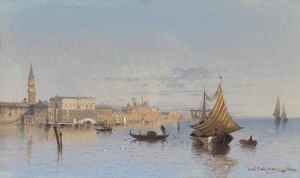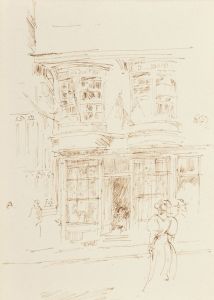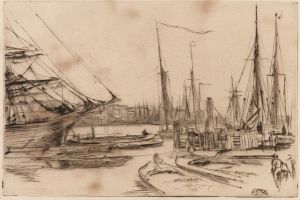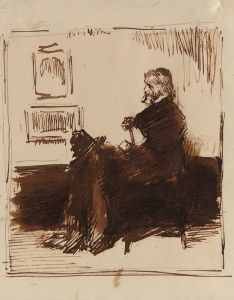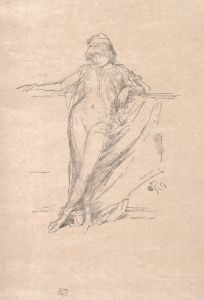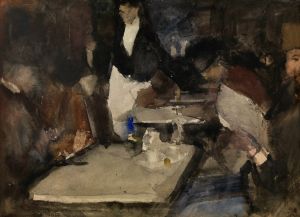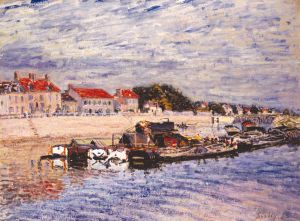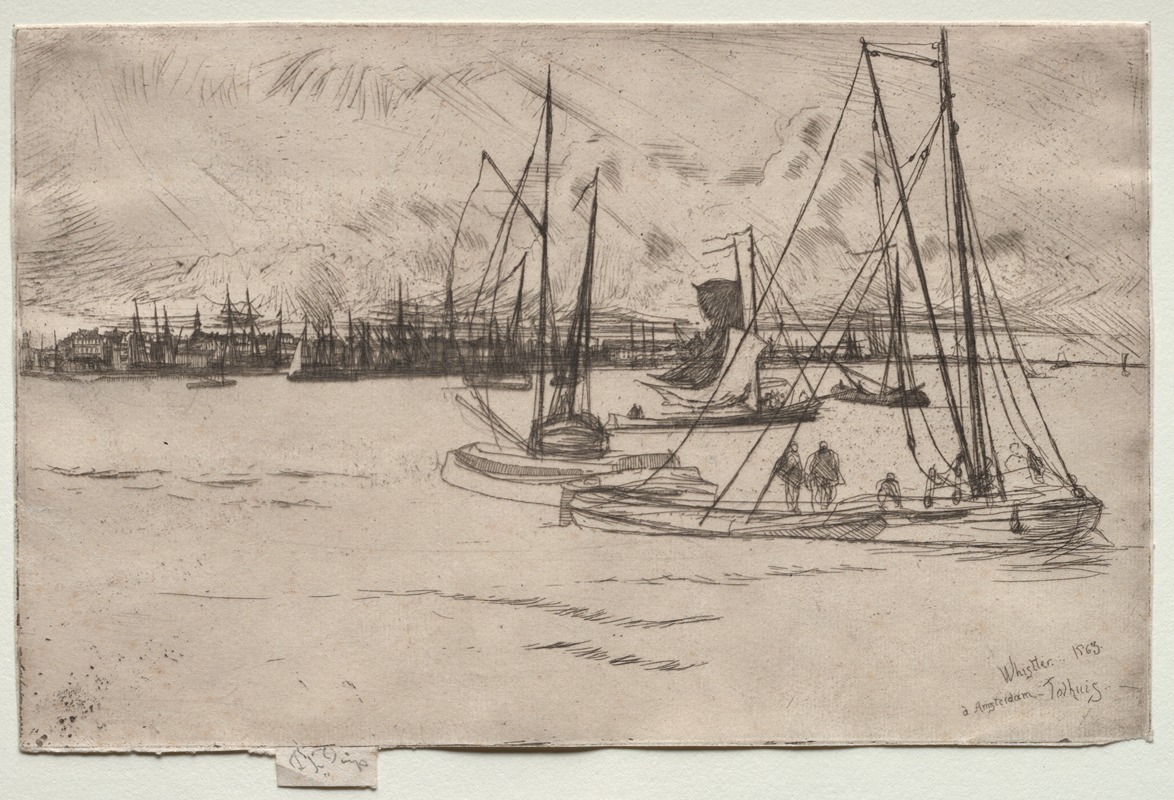
Amsterdam from the Tolhuis
A hand-painted replica of James Abbott McNeill Whistler’s masterpiece Amsterdam from the Tolhuis, meticulously crafted by professional artists to capture the true essence of the original. Each piece is created with museum-quality canvas and rare mineral pigments, carefully painted by experienced artists with delicate brushstrokes and rich, layered colors to perfectly recreate the texture of the original artwork. Unlike machine-printed reproductions, this hand-painted version brings the painting to life, infused with the artist’s emotions and skill in every stroke. Whether for personal collection or home decoration, it instantly elevates the artistic atmosphere of any space.
"Amsterdam from the Tolhuis" is a painting by the American artist James Abbott McNeill Whistler, known for his contributions to the Aesthetic Movement and his influence on the art world during the late 19th century. Whistler, born in 1834 in Lowell, Massachusetts, spent much of his career in Europe, where he developed a distinctive style characterized by a focus on mood and atmosphere rather than detailed representation.
The painting "Amsterdam from the Tolhuis" was created during Whistler's travels in Europe. Whistler was known for his ability to capture the essence of a scene with a few well-placed brushstrokes, and this work is no exception. The painting depicts a view of Amsterdam as seen from the Tolhuis, a location that offered a vantage point across the IJ River towards the city. The Tolhuis itself was a popular spot for both locals and visitors, providing a picturesque view of Amsterdam's skyline.
Whistler's approach to this painting reflects his interest in the interplay of light and color, as well as his fascination with the atmospheric effects of the environment. The composition likely emphasizes the serene and tranquil aspects of the scene, with a subtle palette that captures the muted tones of the cityscape under specific lighting conditions. Whistler often employed a limited color scheme to evoke a particular mood, and his works from this period frequently exhibit a harmonious balance between form and color.
Throughout his career, Whistler was influenced by various artistic movements, including Impressionism and Japonism, which is evident in his use of composition and color. His works often focused on the beauty of everyday scenes, and he was adept at transforming ordinary views into extraordinary compositions through his unique artistic vision.
Whistler's time in Europe, particularly in cities like London and Paris, exposed him to a vibrant artistic community and allowed him to refine his techniques. His works were well-received by some critics, although he also faced controversy and criticism, notably in his famous libel case against art critic John Ruskin. Despite these challenges, Whistler's reputation as an innovative and influential artist continued to grow.
"Amsterdam from the Tolhuis" is a testament to Whistler's ability to capture the essence of a place with minimal detail, focusing instead on the overall impression and emotional impact of the scene. His work continues to be celebrated for its contribution to the development of modern art, and his paintings are held in high regard by art historians and enthusiasts alike.
While specific details about the painting's creation and its current location may not be widely documented, it remains an important part of Whistler's oeuvre, reflecting his mastery of capturing the subtle beauty of urban landscapes. Whistler's legacy endures through his innovative approach to art, which paved the way for future generations of artists to explore new ways of seeing and representing the world around them.





